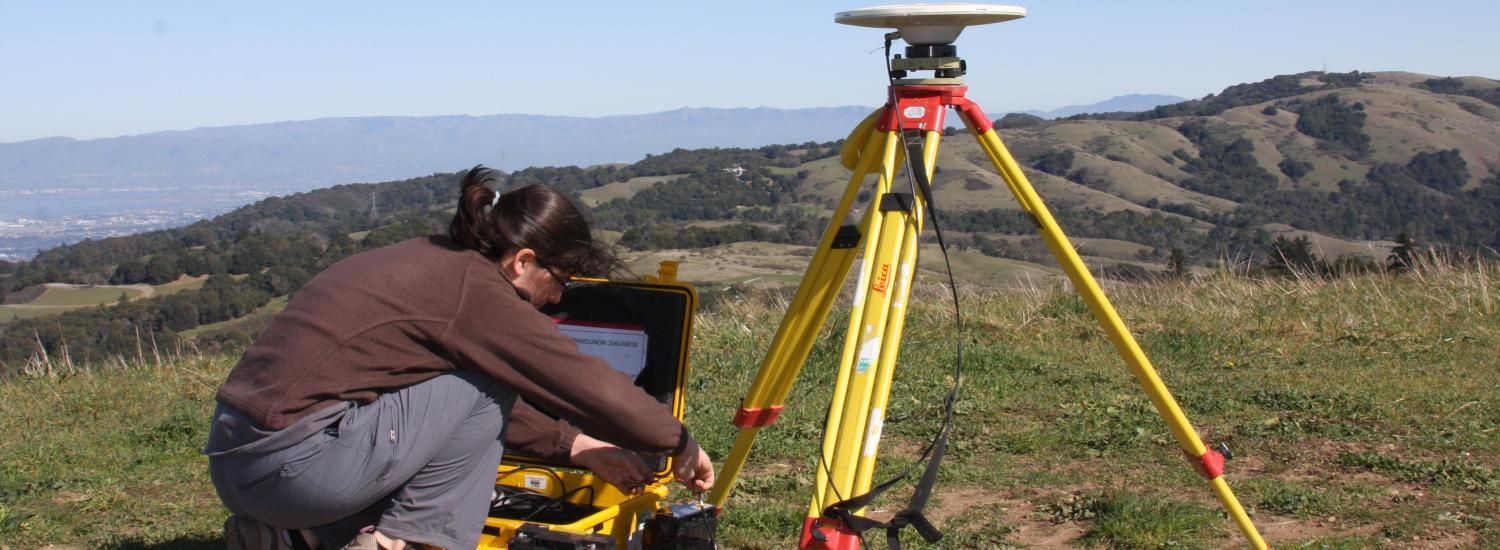CIRES welcomes new tectonic geodesist Kathryn Materna
Materna’s focus on earthquake cycles and tectonic deformation will add depth to CU Boulder geodesy research

As colder temperatures and winter storms greet students at the start of the 2024 spring semester, CIRES is excited to welcome a new fellow: Kathryn Materna, a tectonic geodesist and assistant professor in the Department of Geological Sciences at CU Boulder. Materna’s research in California and abroad furthers our understanding of earthquakes: from small quakes caused by geothermal energy production to tectonic movements at the intersection of fault zones.
“I'm excited to be part of a team that involves geodesists with different specialties all in the same place,” Materna said. “CU is home to multiple researchers who work on space-geodetic data but from many different perspectives. That means that you can frequently find great opportunities for collaboration.”
In her work, Materna uses space geodetic and geophysical data such as Global Navigation Satellite Systems (GNSS), InSAR satellite radar, and seismic datasets. GNSS generates understanding around fault systems and InSAR indicates when and where fault slip, or movement along fault lines, occurs.
Adding another geodesist to CIRES’ Council of Fellows adds a depth of experience to CIRES and the Department of Geology. Another fellow hired last fall, Khosro Ghobadi-Far, is also a geodesist.
“We are super excited to welcome Kathryn Materna to CIRES,” said Maggie Tolbert, Associate Director of CIRES. “Her geodesic research on earthquakes, fault slips, and the impact of energy production on tectonic movement will add to our strengths in hazard prediction and protection of human life and property. Kathryn is also an exceptional speaker and we are excited for her to teach, mentor, and interact with our CU student community.”
Materna grew up in New Jersey and received a BS in Earth, Atmospheric, and Planetary Science at MIT. She went on to UC Berkeley where she completed a PhD in Earth and Planetary Science while working in the Active Tectonics Lab and the Berkeley Seismology Lab. For the past four years, Materna has been a Mendenhall Postdoctoral Fellow at the US Geological Survey Earthquake Science Center in Moffett Field, California. There, she worked on understanding how a geothermal field beneath the Salton Sea, a source of renewable energy, may also cause small and frequent earthquakes.
“One of my major projects was investigating ground deformation in the Salton Sea, a geothermal field that is the largest untapped geothermal resource in California,” Materna said. “So it's been an important project for the USGS to understand why those types of earthquakes are occurring, and inform the public about them.”
Materna’s most recent research continued her work on a phenomenon increasingly recognized as important in earthquake science: fault creep. In Northern California, for example, where three tectonic plates intersect, some faults can slip slowly past each other without generating earthquakes, but other faults remain locked for long periods of time and build up stress that is suddenly released in earthquakes. Adding to the complexity, some major fault systems in California produce a combination of seismic and aseismic slip. Materna's research aims to illuminate where and how slip occurs in complex natural fault systems.
At CIRES, Materna is looking forward to incorporating a variety of geodetic data streams to better understand the process of fault slip. This approach is similar to her research in the Salton Sea where she incorporated data from five different geodetic sensors to characterize slip before, during, and after an earthquake sequence. She will continue to research the mechanisms of plate tectonics including shallow fault creep in California and eventually in Colorado, too.
In addition to research, Materna will teach undergraduate courses at CU Boulder. This spring, she’ll teach undergraduate geophysics, and she hopes to teach geodesy graduate courses in the future. She’s also excited to pursue potential fieldwork opportunities, which she enjoyed during her PhD at UC Berkeley.
Materna already feels settled in Boulder, where she moved in December, and enjoys running and the easy access to trails. Aside from bountiful recreation, she is grateful to have landed in Boulder, a leader in the geodesy field.
“Multiple institutions in Boulder have a long history of top-notch geodesy research,” Materna said. “Being in Boulder feels sort of like an inspiration.”